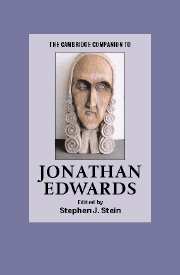Book contents
- Frontmatter
- Introduction
- Part I Edwards’s life and context
- Part II Edwards’s roles and achievements
- 5 Edwards as preacher
- 6 Edwards as revivalist
- 7 Edwards as theologian
- 8 Edwards as philosopher
- 9 Edwards as biblical exegete
- 10 Edwards as missionary
- Part III Edwards’s legacy and reputation
- The Works of Jonathan Edwards
- Further Readings
- Index
- Series List
5 - Edwards as preacher
from Part II - Edwards’s roles and achievements
Published online by Cambridge University Press: 28 November 2007
- Frontmatter
- Introduction
- Part I Edwards’s life and context
- Part II Edwards’s roles and achievements
- 5 Edwards as preacher
- 6 Edwards as revivalist
- 7 Edwards as theologian
- 8 Edwards as philosopher
- 9 Edwards as biblical exegete
- 10 Edwards as missionary
- Part III Edwards’s legacy and reputation
- The Works of Jonathan Edwards
- Further Readings
- Index
- Series List
Summary
The great preachers of English-speaking civilization have ranked with the greatest creative writers as shapers of the language, and the literature of the printed sermon is voluminous by any standard; yet the sermon has always labored under certain ambiguities peculiar to its genre. Most obvious is the question of exactly what the text of a sermon represents. Is it what was preached, or a literary correlative, or a separate work altogether? To assert that one is discussing the performance or speech act that is preaching when referring only to a printed text is literally untrue; rather, what is being considered is inevitably a form of literature, the author of which must be considered a literary artist as much as anyone working in the various genres of prose and verse.
The critic Edmund Gosse once observed of the seventeenth-century English preacher Jeremy Taylor that his reputation “has been injured among general readers by the fact that he is a divine, and among divines by the fact that he is an artist. ”1 Indeed, the relationship between sermon-making and artistic endeavor involves ambiguities that are probably even more troublesome in America than in England, given the American insistence upon the separateness of the sacred and the secular. For different reasons, perhaps, American clergy and the general public have mutually assumed that sermons are somehow not really “literature ” and that the authors of great sermons are not really “artists. ”
- Type
- Chapter
- Information
- The Cambridge Companion to Jonathan Edwards , pp. 103 - 124Publisher: Cambridge University PressPrint publication year: 2006
- 1
- Cited by

